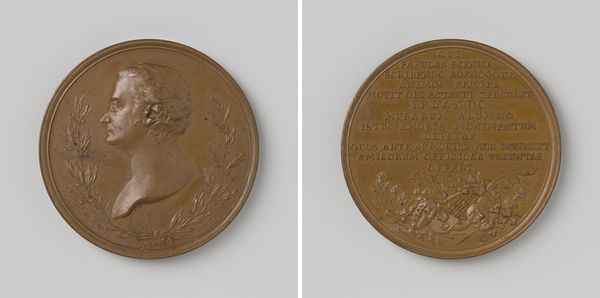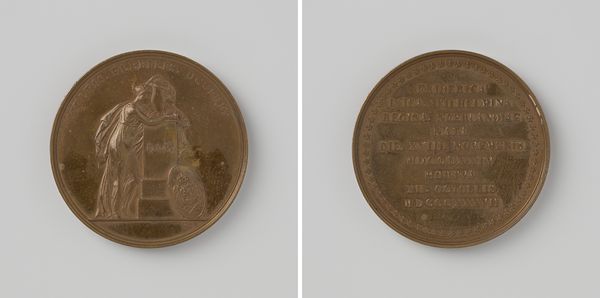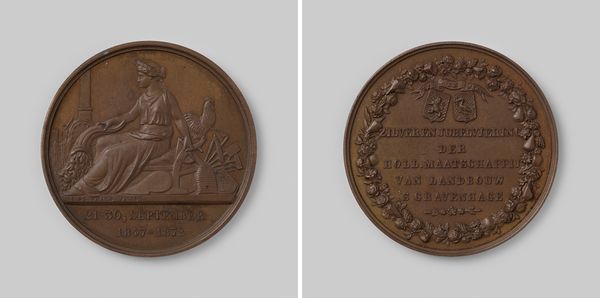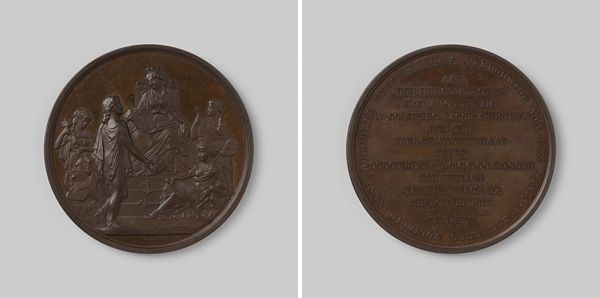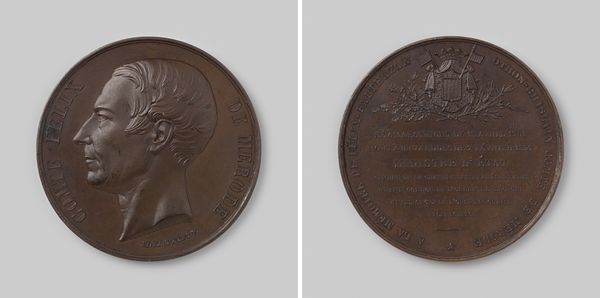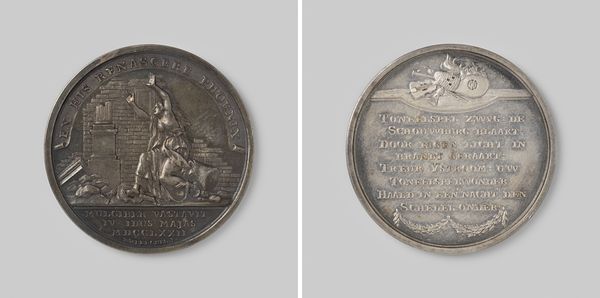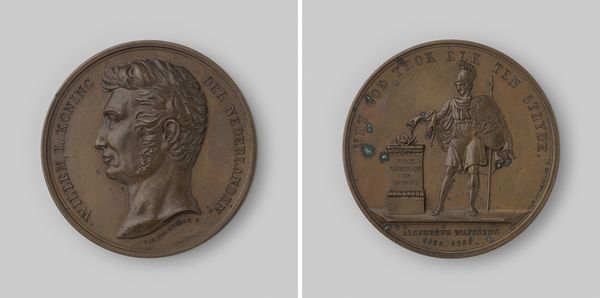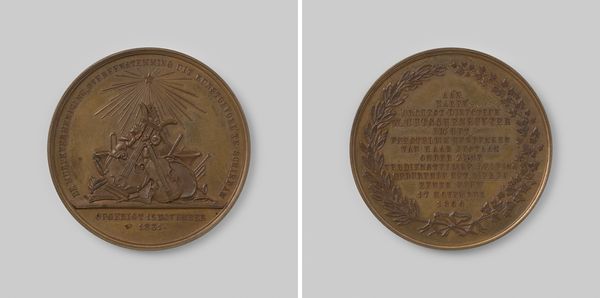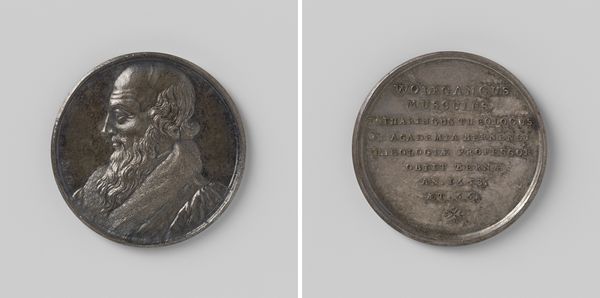
Jacob van Lennep, voorzittend meester van de loge Willem Fredrik te Amsterdam 1866
0:00
0:00
metal, bronze, sculpture, engraving
#
portrait
#
toned paper
#
metal
#
old engraving style
#
bronze
#
sculpture
#
engraving
Dimensions: diameter 5.6 cm, weight 75.92 gr
Copyright: Rijks Museum: Open Domain
Editor: This is an engraved bronze medal from 1866, titled "Jacob van Lennep, voorzittend meester van de loge Willem Fredrik te Amsterdam." The portrait has such a solemn feel to it, so different from contemporary medals. How would you interpret this work, especially within its historical and cultural context? Curator: Well, let’s consider this medal as an object intended for public display and dissemination, not just personal adornment. Jacob van Lennep was clearly a figure of some importance within his lodge. Medals like these functioned as tokens of membership, commemorating key figures and solidifying social bonds within the Masonic order. What do you notice about the inscription on the reverse? Editor: It's a dedication... listing titles and honors, all very official. It speaks to the public role of Freemasonry and the importance of its leaders, like van Lennep, right? Curator: Precisely. These medals visually reinforce a hierarchical structure. The artistry elevates Freemasonry's public image, presenting them as upstanding citizens. And the Masonic symbol—the all-seeing eye—reinforces what? Editor: Well, notions of enlightenment, perhaps moral authority… Were there controversies surrounding Freemasonry during this period that this image might be trying to combat? Curator: Absolutely. Throughout the 19th century, Freemasonry was often viewed with suspicion, even hostility, in some quarters, accused of harboring secret societies and undermining established religious or political orders. Medals like this could be seen as a conscious effort to counter negative publicity, demonstrating that Masonic values were compatible with civic virtue. Did Freemasonry shape the visual or architectural language of the Netherlands at the time? Editor: That’s a great question. I wonder how that impacted building and the design. It makes me want to study Masonic temples and symbolism in Dutch art. Curator: Excellent! Now you’re thinking like a historian of art and culture. This simple medal tells us a lot about the politics of imagery in 19th-century Dutch society.
Comments
No comments
Be the first to comment and join the conversation on the ultimate creative platform.
